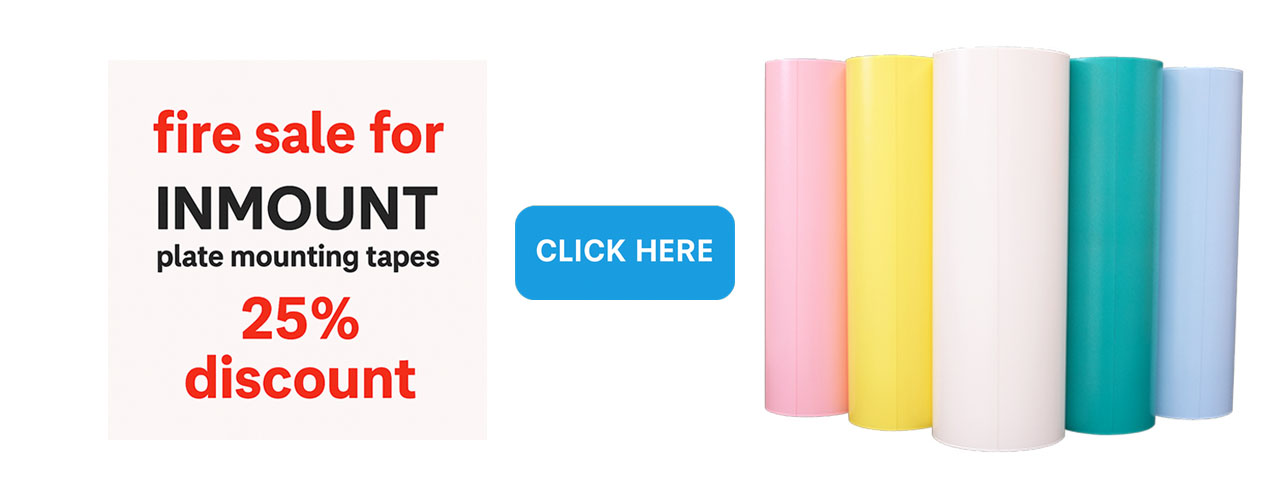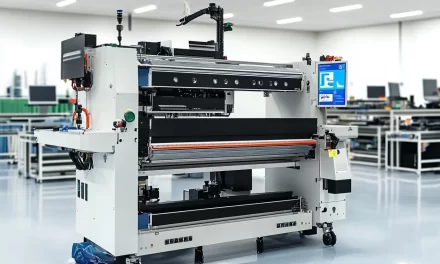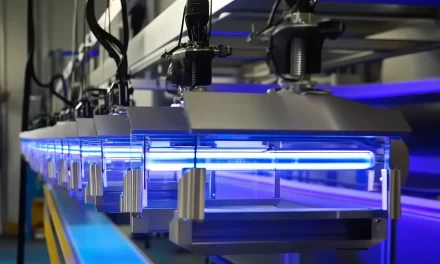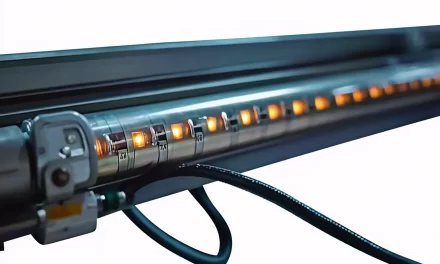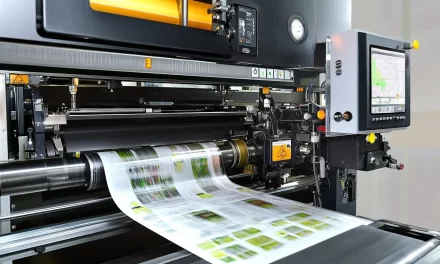Guard Systems in Flexographic Printing: Protecting People, Productivity, and Precision
The modern flexographic press is a combination of speed, precision, and automation. But with all its moving parts—rotating cylinders, high-speed web tension, sharp cutting tools, and hot drying systems—this marvel of engineering also presents inherent risks. That’s why guard systems are not just accessories in flexographic printing; they’re essential safety mechanisms that protect both human lives and capital investments.
As safety regulations tighten and workplace culture continues to evolve toward zero-incident goals, integrating effective guard systems has become a non-negotiable aspect of pressroom design. These systems go far beyond physical barriers; today’s guard systems include sensors, interlocks, alarms, and smart safety technology that stop accidents before they happen.
In this article, we’ll explore what guard systems are, why they matter in flexo printing, the different types available, how to maintain them, and how they contribute not just to safety—but to overall operational excellence.
What Are Guard Systems in Flexographic Printing?
Guard systems are safety mechanisms designed to protect press operators from physical harm and prevent damage to equipment during flexographic printing operations. They can be mechanical (such as physical covers or enclosures), electrical (safety switches or emergency stops), or electronic (light curtains and smart sensors).
Their core function is to:
- Prevent access to dangerous moving parts during operation
- Detect abnormal press behavior (like jams or overheating)
- Automatically shut down the system during emergencies
- Comply with regulatory standards such as OSHA, CE, and ANSI
In short, guard systems are your pressroom’s first line of defense—ensuring that the pursuit of print perfection never comes at the cost of safety.
Why Guard Systems Are Essential in Flexo Printing
Operating a flexographic press involves constant interaction with machinery, whether it’s setting up a job, changing plates, cleaning rollers, or clearing web breaks. Each of these tasks introduces potential hazards, including:
- Entanglement with rotating rollers
- Pinch points between moving parts
- Cuts or punctures from sharp dies or blades
- Burns from hot air dryers or UV curing lamps
- Hearing damage from prolonged exposure to noise
A well-designed guard system mitigates or eliminates these risks, allowing operators to focus on productivity without compromising their health or safety.
Here’s why investing in high-quality guard systems is a must for every flexo operation:
1. Operator Protection
Human safety is paramount. Guards prevent hands, limbs, and clothing from entering dangerous zones, especially during web threading, die changes, and print station maintenance.
2. Compliance with Safety Regulations
Regulatory bodies around the world require printing presses to have guarding that meets specific safety standards. Non-compliance can lead to fines, shutdowns, or worse—serious injury.
3. Reduced Downtime
Accidents often result in unplanned downtime. Guard systems reduce incidents, keep your press running, and protect your bottom line.
4. Increased Operator Confidence
A safe environment fosters focus, morale, and responsibility. When operators feel protected, they perform better and take greater pride in their work.
5. Equipment Longevity
Guard systems can also prevent accidental contact that may damage rollers, dies, or control panels—helping protect your capital investment.
Common Types of Guard Systems in Flexography
Flexo presses vary in size and complexity, but the most effective guard systems share a layered, multi-zone approach. Here are the most common types:
1. Fixed Guards
These are permanent barriers that cannot be removed without tools. Typically found around gears, belts, or drive systems.
- Best for parts that do not require frequent access
- Highly durable and tamper-proof
- Simple but effective
2. Interlocked Guards
Interlocked guards have switches that disable press operation when the guard is open or removed.
- Common in print stations, die cutting areas, and UV curing sections
- Ensures the machine can’t run when guards are disengaged
- Essential for safe access during setup and cleaning
3. Light Curtains and Laser Scanners
Advanced electronic systems that detect motion or body parts entering hazardous areas.
- Stops press immediately if zone is breached
- Useful in semi-automated or robotic loading areas
- Ideal for large, open access points where physical guards are impractical
4. Emergency Stop Systems (E-Stops)
Large, easily accessible buttons that allow operators to stop the press instantly.
- Should be located at multiple points around the press
- Often integrated with safety PLCs (programmable logic controllers)
- Requires minimal force to activate
5. Safety Mats and Floor Sensors
Pressure-sensitive mats placed around dangerous areas.
- When stepped on, they stop press movement
- Common in older press designs or legacy equipment retrofits
Smart Safety: The Rise of Intelligent Guard Systems
Modern presses are integrating Industry 4.0 principles into safety. Smart guard systems now include:
- Status monitoring with real-time dashboards
- Data logging for incident reporting and compliance
- Predictive maintenance based on usage data
- Remote diagnostics for troubleshooting faults without exposing operators to risk
Some systems can even send alerts to mobile devices when a guard is tampered with or when unsafe conditions are detected.
These innovations reduce reaction time, improve transparency, and allow safety to scale with pressroom growth.
How to Maintain and Inspect Guard Systems
Guard systems are only as effective as their upkeep. Routine inspection is critical to ensure they function as designed.
Weekly Checklist
- Check for broken or missing guards
- Test interlocks and E-stops
- Look for signs of tampering or bypassing
- Clean sensors and light curtains
- Verify all guards are secured after maintenance
Monthly Audit
- Inspect wear points on hinges and locks
- Test safety relays and PLC functionality
- Ensure compliance labels and warnings are visible
- Confirm system response times match OEM specs
Training
Operators should be trained to:
- Recognize guard system faults
- Know the location of all E-stops
- Understand why bypassing guards is prohibited
- Report any unsafe conditions immediately
A well-guarded press is a shared responsibility between management, operators, and maintenance staff.
Integrating Guard Systems with Workflow Efficiency
Contrary to old beliefs, safety doesn’t slow you down—it makes you more productive. Here’s how:
- Fewer Accidents = More Uptime: Every incident avoided saves time and resources.
- Standardized Access: Guard systems with defined access points make setups and cleanups faster and more consistent.
- Digital Lockouts: Smart systems can manage who accessed which zone, when, and why—ideal for audits and quality assurance.
- Faster Root Cause Analysis: Safety logs help troubleshoot issues quickly and accurately.
Ultimately, guard systems help your team work smarter and safer.
Future Trends in Flexo Guarding Technology
As flexographic presses become faster and smarter, guard systems are evolving to match:
- RFID-Enabled Access: Grant or restrict entry to zones based on user credentials.
- Augmented Reality (AR): Visualize press safety zones and alerts in real-time.
- Integrated Camera Monitoring: AI-based detection of unsafe behavior.
- Eco-Safe Materials: Lightweight and recyclable guard panels.
- Biometric Access Controls: Added security for critical access zones.
The future of guarding is not just about blocking danger, but about managing safety proactively and intelligently.
Conclusion
In the complex and fast-paced world of flexographic printing, guard systems are more than mechanical add-ons—they’re operational enablers.

